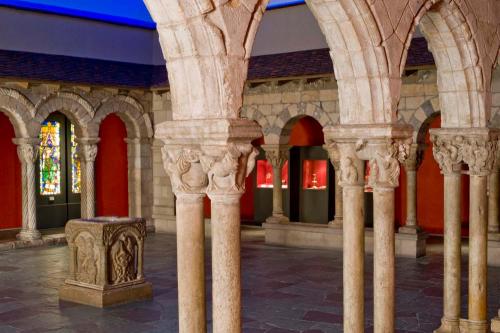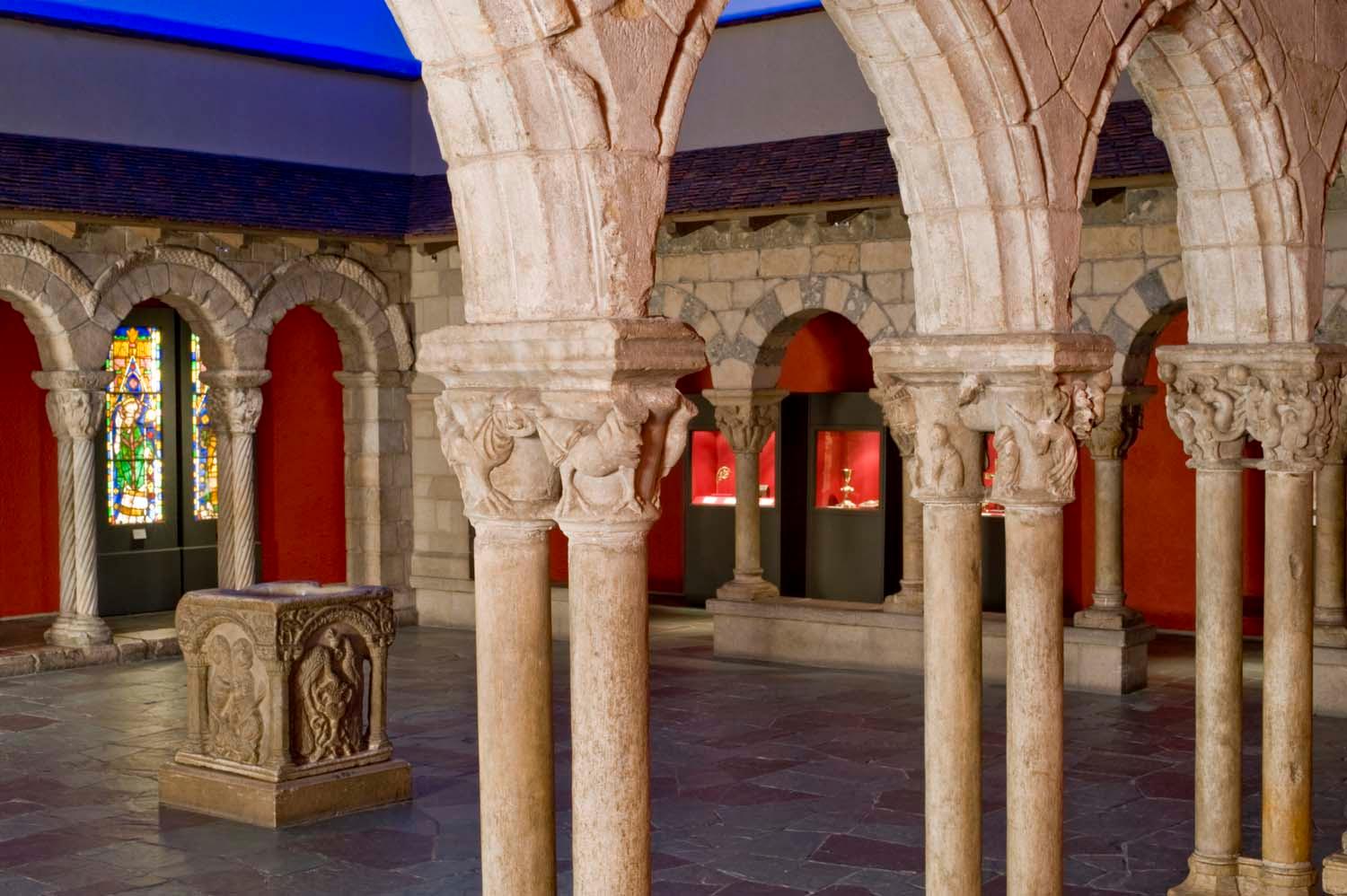Double stone capital from the Cistercian abbey of Nôtre-Dame-de-Pontaut in Gascony
Date: late 14th century
Dimensions:
plinth to keystone: 8 ft., 11 in. (271.8 cm)
plinth to spring of arch: 6 ft., 1 3/4 in. (187.3 cm)
between columns (on centers): 5 ft., 2 in. (157.5 cm)
Medium: marble and limestone
Place of Origin: France, Pontaut (Landes)
Classification: Architectural Elements
Credit Line: Purchased with funds from the Libbey Endowment, Gift of Edward Drummond Libbey
Object number: 1931.89
Label Text:The Gothic: Elegant Triumph or Barbarian Crudeness?
The Pontaut arcade, to your right, contrasts sharply with the Cloister Gallery’s other medieval arcades. They are “Romanesque” in style, making use of robust, semicircular arches based on ancient Roman architecture. The Pontaut arcade uses pointed, far lighter arches typical of the “Gothic” style; derived from Islamic architecture, it was the last major development of medieval architecture.
The name “Gothic” was coined as a term of ridicule during the Italian Renaissance, when late medieval culture was seen as backward and crude (as were the Goths, one of the barbarian groups that had invaded the Roman Empire). Medieval people, however, referred to the Gothic style as ars nova—the “new art,” or, as we might say, “modern architecture.”
Ironically, this richly carved arcade comes from a monastery inhabited by monks of the Cistercian order, which at one time opposed the use of any artistic embellishment in monasteries. The damaged, somewhat awkward images on the Pontaut capitals are difficult to decipher, but include fantastic animals and human figures. Can you can find the praying monk, the musician playing a stringed instrument, and the unicorn?
The Pontaut arcade, to your right, contrasts sharply with the Cloister Gallery’s other medieval arcades. They are “Romanesque” in style, making use of robust, semicircular arches based on ancient Roman architecture. The Pontaut arcade uses pointed, far lighter arches typical of the “Gothic” style; derived from Islamic architecture, it was the last major development of medieval architecture.
The name “Gothic” was coined as a term of ridicule during the Italian Renaissance, when late medieval culture was seen as backward and crude (as were the Goths, one of the barbarian groups that had invaded the Roman Empire). Medieval people, however, referred to the Gothic style as ars nova—the “new art,” or, as we might say, “modern architecture.”
Ironically, this richly carved arcade comes from a monastery inhabited by monks of the Cistercian order, which at one time opposed the use of any artistic embellishment in monasteries. The damaged, somewhat awkward images on the Pontaut capitals are difficult to decipher, but include fantastic animals and human figures. Can you can find the praying monk, the musician playing a stringed instrument, and the unicorn?
Not on view
In Collection(s)




